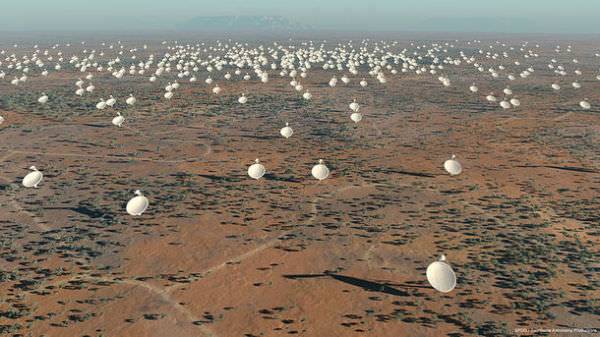The largest telescope ever to exist (on this planet anyway) is going to be the Square Kilometre Array. The SKA will cost about $2.1 billion to construct. Australia and South Africa are bidding on the project. What may give Australia an edge is the way they intend to handle the massive computer processing and storage demands of the array. Crowdsourcing.

The crowdsourced computing initiative which those behind the Australia bid have put together will leverage personal computer power in lieu of extremely expensive petaflop supercomputers.
Artist’s rendition of the Square Kilometre Array

Computerworld Australia describes the crowdsourcing project.
“The International Centre for Radio Astronomy Research (ICRAR), along with iVEC, the company running the $80 million high performance computing Pawsey Centre at CSIRO in Western Australia, are set to launch a ‘citizen science’ application this year based on the open source Nereus V Cloud computing technology developed at Oxford University. The application, dubbed “theskynet” by Australian researchers, would grant anyone not affiliated with the global telescope project access to the datasets formed out of the array’s work.”
By 2013, when it is fully up and running, the application should allow the Pawsey Centre to engage in petaflop computing. It will also make it the third-fastest supercomputer in the world, as well as possbily the largest cloud computing networks on the globe.
According to PopSci, the SKA will consist of 3,000 radio dishes, “spread as far as 2,000 miles in every direction from a central core, offering a full 1,000,000 square meters (that’s one square kilometer) of collection surface.”
There have been crowdsourcing projects already to help crunch the massive data that comes through various astronomical projects, most famously, the Seti@Home project, which began in 1999. Seti@Home is a radio telescope project to listen for signals that might come from intelligent life. It continues to this day.
Distributing computing and storage needs between institutional and personal computers is not a one-way street. In addition to saving money, saving heat and energy (using already-running computers), it will also provide datasets from the array to both scientists and members of the public willing to run the app on their rigs.
Australian radio telescope photo by Amanda Stater










